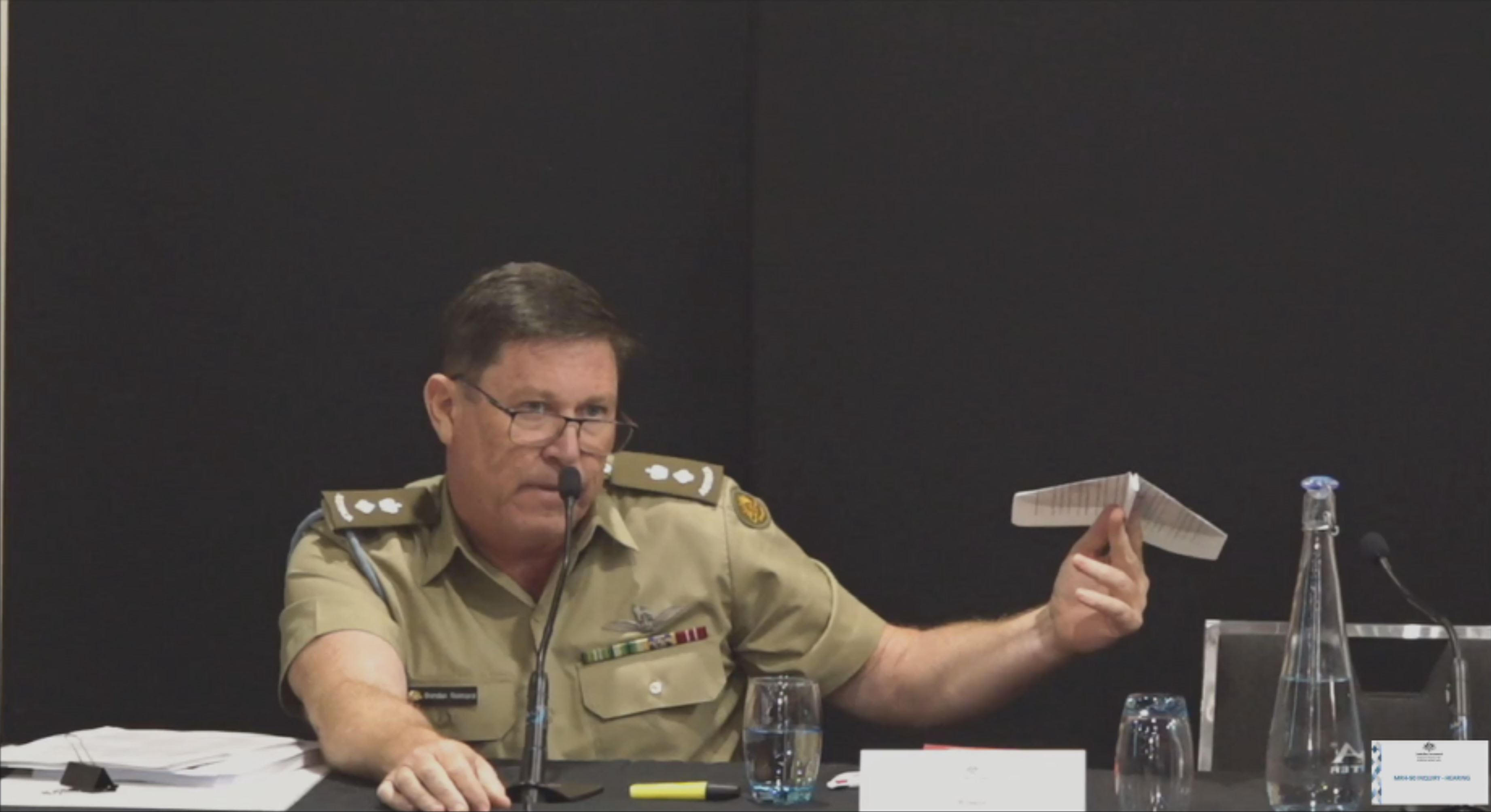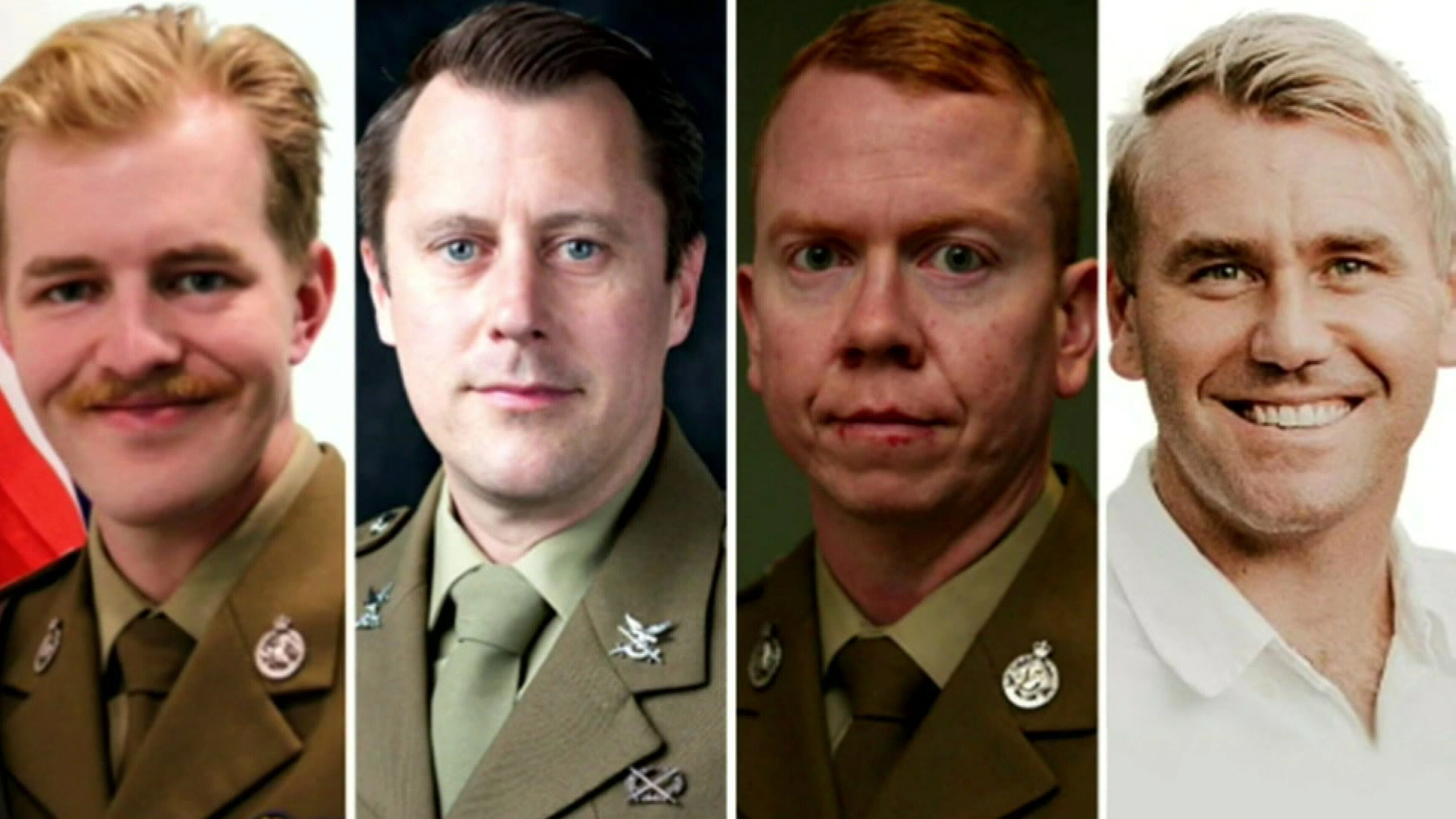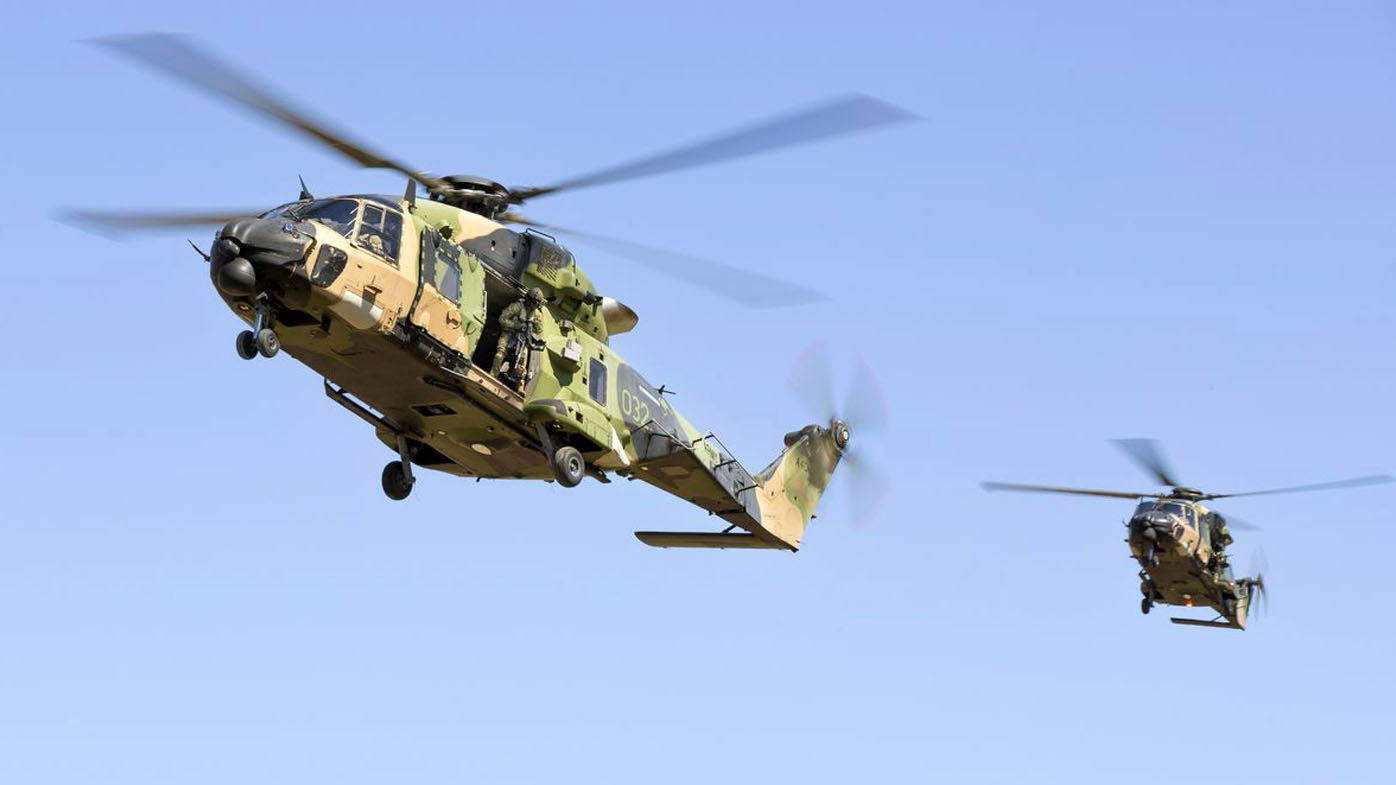An Army test pilot who red-flagged hi-tech helmet-mounted visors used in last year's fatal Taipan helicopter crash says he was told by Defence that his concerns would be ignored because the equipment "already been paid for".
Lieutenant Colonel Brendan Reinhardt has told an inquiry into the MRH-90 Taipan crash that killed four airmen that his interaction with senior officers was an "uncomfortable situation".
Colonel Reinhardt's flight test organisation, the Army Aviation Test and Evaluation Section (AATES), had deemed the TopOwl helmet-mounted sight display an "unacceptable risk to flight safety" due to ambiguous and inconsistent symbology projected on to the pilot's visor.
READ MORE: ADF seeks to limit independent inquiry into deadly Taipan crash
Despite AATES concerns about "substantial risk of multiple deaths", he said Army Aviation, "took the view that this (TopOwl) should go ahead, as it's already been paid for".
"So it was a very uncomfortable situation," Colonel Reinhardt told the inquiry being overseen by Margaret McMurdo.
AATES test pilot Major Ian Wilson had found significant inconsistencies between the pitch, roll, bank and attitude information displayed by the TopOwl and the actual readings.
"We had people bailing up my (AATES employees) and trying to explain why we were wrong. I would go to meetings to discuss my report, and people would lead with, 'Major Wilson is wrong', and I would have to correct them and say, 'This isn't Major Wilson's report, this is the AATES flight test organisation report, which has been through a review process and is signed by me – it was awkward."
Several times during the inquiry, Colonel Reinhardt used a paper aeroplane to explain the aviation concepts involved in flight safety evaluation.
He said that in 2019, more than four years before the July 28, 2023 crash, AATES conducted daylight testing of the TopOwl software update.
Colonel Reinhardt said the Major Wilson found that when the helicopter was flying at a 10 degrees pitch up attitude to maintain altitude, with zero angle of bank, (ie nose up slightly but travelling straight ahead with no turn), when the pilot looked to the left or right, the TopOwl incorrectly indicated a 10 degrees angle of bank, as if the helicopter was making a turn.
"(TopOwl) recorded an angle of bank when there was no angle of bank," Colonel Reinhardt said, adding that Major Wilson's observations were backed up by a flight test engineer Jordan Zahra.
AATES testing of TopOwl was abandoned so that the problems it found with TopOwl could be rectified, rather than putting test pilots' safety at further risk.
Colonel Reinhardt told the inquiry that he was aware of Defence's sensitivity about the TopOwl software upgrade being deemed a risk to safety, ensuring Major Wilson's report received an extra level of review.
"I sought an extra level of review, because I knew this issue was going to be topical, and I wanted an extra set of eyes to go through that report independently and review Major Wilson's conclusions and where I was going with this report – I wanted that independent review," he said.
Ms McMurdo noted that the final AATES report was yet to be declassified by the Army even though its authors had agreed for it to be given a lower classification.
Defence eventually certified the software upgrade for TopOwl for use after its own testing but these tests were not conducted below certain altitudes or below certain illumination for reasons of pilot safety.
Colonel Reinhardt said that AATES' view was that a pilot's reliance on TopOwl, combined with incorrect information, made for an "unacceptable risk".
Pressed by Ms McMurdo on his personal opinion, he said: "My opinion is that those combinations lead to spatial disorientation or CFIT (controlled flight into terrain) and accidents."






